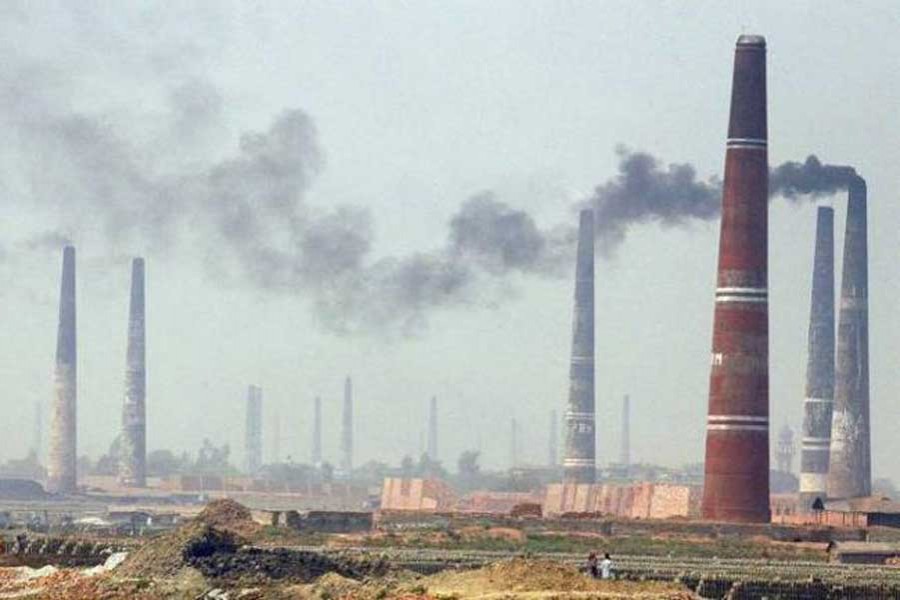Not only the researchers, common people in their daily life experience the impacts of climate change, increased natural disasters, changed weather patterns and the quality of air, water they live in. In the recent past, studies have been conducted in our region which recorded the views and perceptions of the farmers on the changing seasons and changing environment. The studies revealed that 'the lengths of winter, summer and rainy seasons in Bangladesh have increased, while spring has decreased'. People feel that these changes invite adverse impact on agriculture practices, food supply, health conditions and demand various adaptation measures in everyday life.
Apart from the natural impacts of weather changes, the intensity of air pollution in the urban areas increases due to human activities. A report published in the media on May 02, 2018 based on data compiled by the World Health Organisation (WHO) for mega cities with a population of 14 million or more suggested that Dhaka's air quality is the 'third most polluted in the world.' The same report says that the Indian capital Delhi has been found to be the world's most polluted city. Greater Cairo in Egypt is the second most polluted city and Mumbai ranked fourth, while Beijing ranked fifth according to WHO study. The WHO analyst of particulate matter in the air (one of the major pollutant in the air) considered that 'about 90 per cent of people across the world are exposed to bad air, which was linked to 7 million deaths in 2016.' The report further says that in 2016, globally ambient air pollution caused 4.2 million deaths and indoor air pollution caused 3.8 million deaths. WHO cautioned that the 2016 data analysis was incomplete. More information obtained on air pollution status of 4,300 cities in 108 countries of the world suggests that the ambient air pollution increases more than 30 per cent. There are variations in air pollution in different parts of the world affected by climate, seasonal factors, development activities, geographical locations, government actions for controlling pollution, wealth level of the citizens of the cities etc.
Dhaka suffers most with high concentration of fine particles (PM 2.5) and coarse dust (PM 10) in the air. Here are also gaseous pollutants like carbon dioxides, sulfur oxide, nitrogen oxide, ozone, hydrocarbons in the air. Bangladesh generally faces increased air pollution during October to March, the dry season of the year. As per published information, in 2015 the Department of Environment of Bangladesh assessed that the presence of PM 2.5 in Dhaka air was contributed mainly (58 per cent) by the brick kilns, 8 per cent by soil dust and 7 per cent by biomass burning. The balance comes from vehicular and industrial exhaust. Among the top 10 causes of death in Bangladesh five (lung cancer, lower respiratory infections, chronic obstructive pulmonary disease, ischemic heart disease and stroke) are related to air pollution. Over 80 per cent of the people living in urban areas of are exposed to poor air quality levels that exceed WHO parametre.
'The Guardian' published an article on May 01, 2018 revealing the fact that air pollution level in rich cities of the world have improved but in poorer countries, it continues to rise. At the same time, pollution inequality between the rich and poor is widening. The published reports by WHO suggest that air pollution deteriorates rapidly in the cities in South and South-East Asia where more than 70 per cent of the poor people live and suffer from worsening air quality. The WHO pollution study report says that diseases caused by air pollution kill about 7 million people worldwide annually. More than 90 per cent of the air pollution related deaths occur in low and middle-income countries -- mainly in Asia and Africa followed by those of the eastern Mediterranean region, Europe and Americas.
Reducing the risks of breathing in contaminated air may depend on public awareness and political will of the government as well as the income level of the country. China, for instance, has significantly tightened pollution controls as public protests and health concerns affect policy makers. Such a stringent control has started yielding positive results, and many other cities of China once infamous for air pollution are no more in the list of most polluted cities of the world.
Apart from controlling polluting industries, disciplines in construction and traffic movement can result in reducing air pollution. Paris, Madrid, Athens and Mexico City have decided to ban diesel vehicles from their cities within next one decade to tackle air pollution. The campaigners of the big four cities have been urging other city leaders to follow their example. Major clean cities of the world put a lot of emphasis on promoting mass transport use and bicycles instead of individual vehicles. Increased air pollution is also linked with inefficient use of energy by households, industry, transport sectors, coal fired power plants and agricultural practices.
Since air pollution does not recognise political borders, improving air quality demands coordinated actions locally, regionally and globally. Sustained solution for air quality control can be achieved if efficient fuel use in industries, transport sectors and households are promoted.
Mushfiqur Rahman is a mining engineer, and writes on energy and environment issues.


